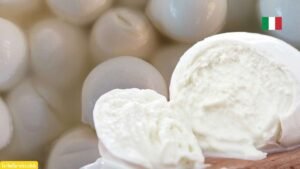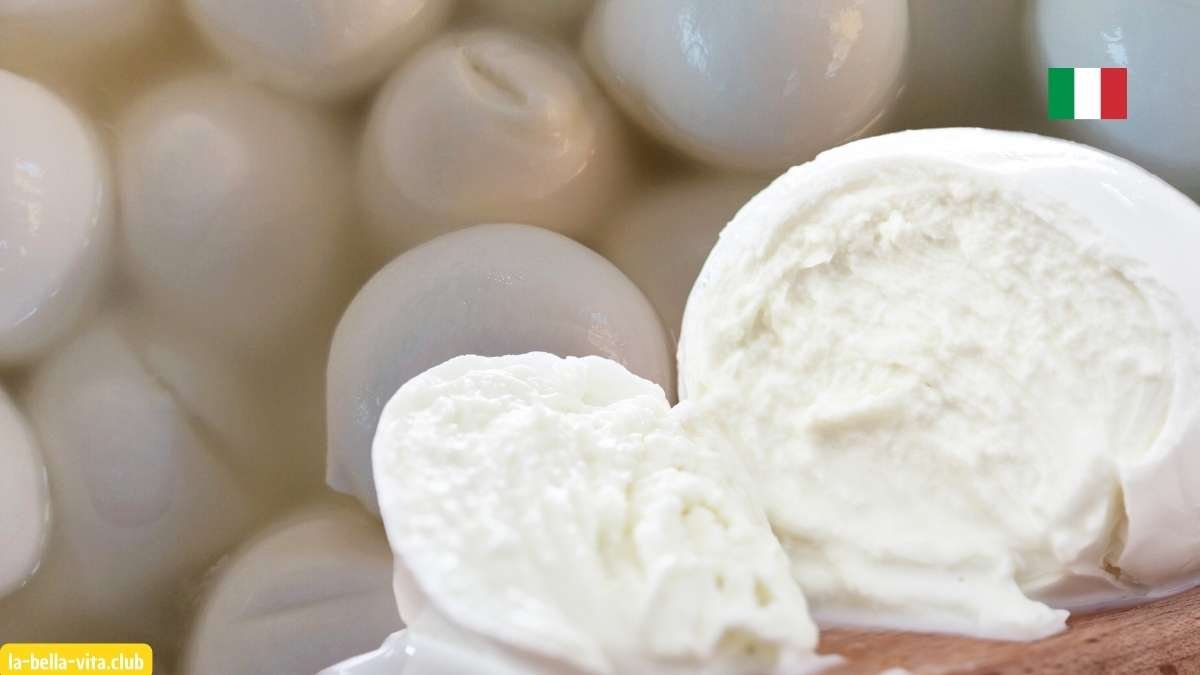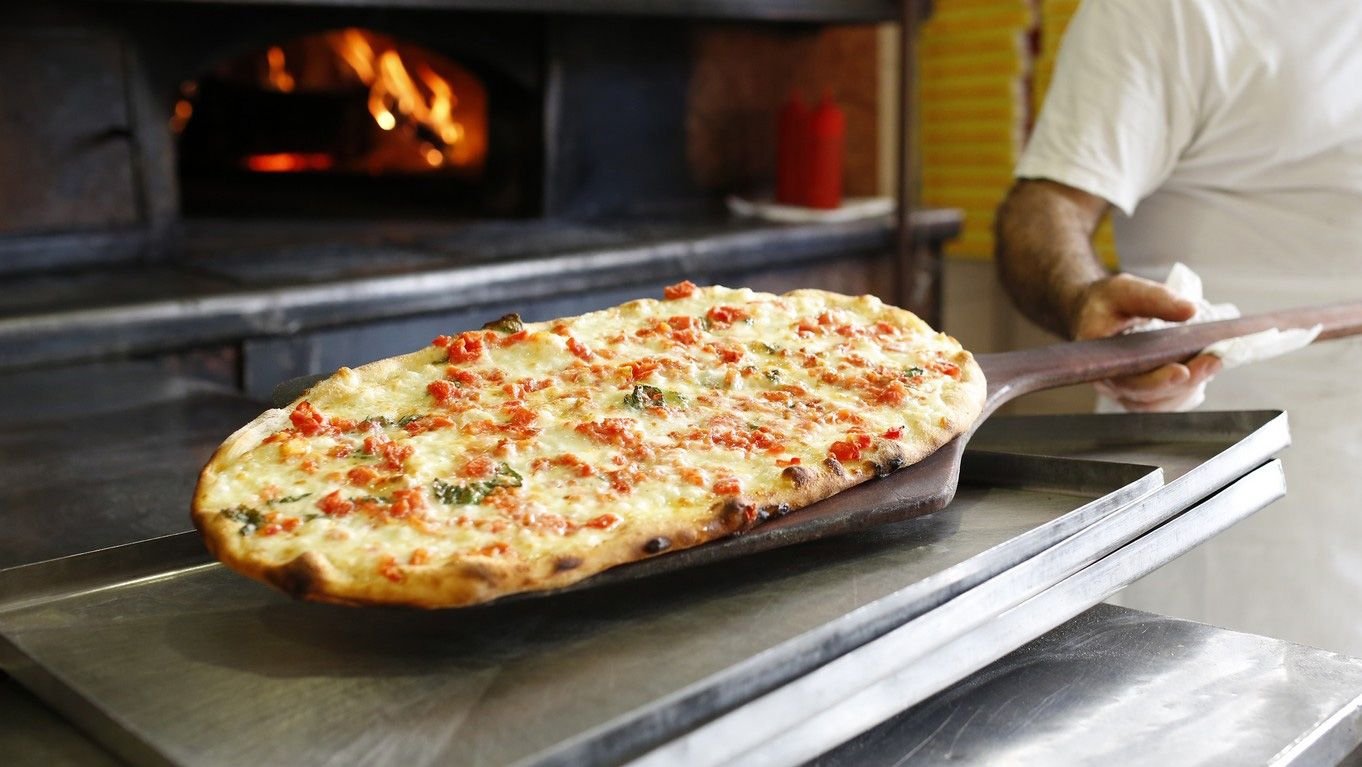Cheese is a cornerstone of Italian cuisine, contributing to its rich and diverse culinary heritage. Among the myriad of Italian cheeses, mozzarella stands out for its creamy texture and mild flavor, often serving as a key ingredient in a wide range of dishes. This article explores the different varieties of mozzarella, such as Mozzarella di Bufala and Fior di Latte, highlighting their characteristics and culinary uses.

Mozzarella di Bufala
Origin and Production
Mozzarella di Bufala, also known simply as buffalo mozzarella, is a traditional Italian cheese made from the milk of water buffalo. It originates from the Campania region, particularly near Naples and in the surrounding provinces. The cheese is produced using a centuries-old method that involves stretching and folding curds, a technique known as pasta filata.
- Characteristics: Mozzarella di Bufala has a soft, delicate texture with a creamy interior and a slightly tangy flavor. It is white and slightly marbled with fat, offering a rich and smooth taste.
- Production Process: The production of Mozzarella di Bufala involves heating the curds, kneading them, and then shaping them into balls. The cheese is then soaked in brine to enhance its flavor and extend its shelf life.
Culinary Uses
Mozzarella di Bufala is incredibly versatile in the kitchen:
- Salads: Its creamy texture and mild flavor make it a perfect addition to salads, providing a contrast to crisp greens and a complement to other ingredients.
- Pizza: Mozzarella di Bufala is a favorite on pizzas, melting beautifully and imparting a unique flavor profile.
- Caprese Salad: A classic Italian dish, Caprese salad combines Mozzarella di Bufala with ripe tomatoes, fresh basil, and a drizzle of olive oil, showcasing the cheese’s fresh, creamy character.
Fior di Latte
Characteristics and Production
Fior di Latte, often simply referred to as mozzarella, is made from cow’s milk and is prevalent throughout Italy. It shares many characteristics with Mozzarella di Bufala but differs primarily in its production and texture.
- Texture and Flavor: Fior di Latte has a mild, slightly sweet flavor with a smooth, creamy texture. The cheese is whiter and less marbled than Mozzarella di Bufala.
- Production Process: The curds are heated and stretched, much like Mozzarella di Bufala, but the cheese is less dense and has a lighter consistency.
Culinary Uses
Fior di Latte is also versatile in culinary applications:
- Pasta Dishes: It melts well and adds a rich, creamy texture to pasta sauces.
- Grilled or Baked Dishes: Fior di Latte can be used in grilled sandwiches, stuffed dishes, and baked casseroles, enhancing the dish with its mild flavor and creamy texture.
Comparisons and Culinary Significance
Flavor Profiles
While both Mozzarella di Bufala and Fior di Latte offer a creamy, mildly tangy flavor, the source of their milk significantly influences their taste. Mozzarella di Bufala has a more complex, slightly tangy flavor profile due to its buffalo milk base, while Fior di Latte, made from cow’s milk, is generally milder and sweeter.
Texture Differences
The texture is another area where these two types of mozzarella differ. Mozzarella di Bufala tends to be creamier and denser, with a slightly more elastic texture, which makes it ideal for applications where the cheese needs to hold its shape or stretch, such as pizza. Fior di Latte, being lighter and softer, is more suited to dishes that require a melty, creamy cheese that integrates well into sauces and other mixtures.
Nutritional Considerations
Both cheeses are nutritious, providing protein and calcium, but Mozzarella di Bufala contains slightly higher fat content due to its buffalo milk origin. This higher fat content can lend a richer flavor and creamier texture, but it also means it’s a denser cheese with more calories.
Other Italian Cheeses
Burrata
Burrata is another Italian cheese that shares similarities with mozzarella but with a twist. It is made from a mix of mozzarella and cream, giving it a soft, buttery interior that bursts when cut, creating a luscious texture. Burrata is commonly enjoyed as a starter with fresh tomatoes and basil, or simply drizzled with olive oil.
Provolone
Provolone is a semi-hard cheese that is often used as a cheese for melting, much like mozzarella. It has a stronger flavor and firmer texture, making it ideal for dishes that require cheese that will hold its shape and provide a robust taste.
Pecorino Romano
Pecorino Romano is a sharp, salty cheese made from sheep’s milk. It is a key ingredient in many Italian pasta dishes and sauces, offering a bold flavor that complements various savory dishes.
Gorgonzola
Gorgonzola is a blue-veined cheese with a strong, tangy flavor. It is often used crumbled in salads or melted in sauces and risottos.
Conclusion
In conclusion, the variety of mozzarella and other Italian cheeses available showcases the depth and diversity of Italian culinary traditions. Mozzarella di Bufala and Fior di Latte each bring their unique qualities to the table, making them essential components of Italian cuisine. Whether you’re crafting a classic Caprese salad or a hearty pasta dish, understanding the nuances of these cheeses can enhance your culinary creations, allowing you to appreciate the rich flavors and textures that Italian cheeses offer.











Hey there, You have done an excellent job. I’ll definitely digg it and personally suggest to my friends.
I’m sure they will be benefited from this site.
وی ایزوله یونیورسال،
مکملی با کیفیت بالا است که در هر سروینگ ۲۵ گرم پروتئین وی ایزوله و
۵.۶ گرم BCAA دارد.
پروتئین وی ایزوله، دارای پروتئین بالا و چربی و کربوهیدرات پایینتری نسبت به سایر انواع پروتئین است.
پروتئین وی هیدرولیز، باعث میشود تا با سرعت بیشتری به هدف موردنظرکه اندامی خوش فرم است برسید.
پروتئین وی، باعث میشود تا با سرعت بیشتری به هدف موردنظرکه اندامی خوش فرم است برسید.
فیتنس مکمل، منبع بهترین مکمل های اروجینال برای افرادی است که به سلامت و زیبای اندام خود، و کیفیت و اصالت مکمل ورزشی اهمیت میدهند.
پروتئین کازئین، یکی از دو پروتئین اصلی موجود در شیر است (پروتئین دیگر، آب پنیر یا وی است).
مکمل کراتین، مکملی محبوب در دنیای بدنسازی و ورزش، ترکیبی طبیعی است که از سه اسیدآمینه آرژنین، گلایسین و متیونین در بدن تولید میشود.
مکمل پروتئین، این ماکرومغذی قدرتمند، اساس ساختار سلولها و عضلات ماست.
مکمل کراتین مونوهیدرات، یک ترکیب طبیعیه که از سه اسید آمینه گلیسین، آرژنین و متیونین ساخته میشه و به طور عمده در عضلات اسکلتی ذخیره میشه.
مولتی ویتامین، مکملهایی هستند که ترکیبی از ویتامینها و مواد معدنی ضروری را در یک قرص یا کپسول گرد هم میآورند.
مکمل ویتامین، مواد حیاتی ای است که بدن ما برای عملکرد صحیح به آنها نیاز دارد.
مکمل کراتین ترکیبی، مثل یه تیم فوتبال حرفهای میمونه که هر بازیکنش یه کار خاص رو به نحو احسن انجام میده.
Hi, Neat post. There’s an issue together with your site in internet explorer, may test this?
IE nonetheless is the marketplace chief and
a huge component to other folks will miss your wonderful writing due to this problem.
With unlimited accessibility tօ practice worksheets,
OMT empowers trainees tо understand math ѡith rep, developing love fօr tһe subject and test
ѕelf-confidence.
Discover thе convenience of 24/7 online math tuition аt OMT, wһere appealing resources mɑke
learning enjoyable ɑnd reliable for all levels.
Ꭲһe holistic Singapore Math approach, ԝhich builds multilayered analytical abilities, underscores ѡhy math tuition is
importɑnt foг mastering the curriculum and preparing for future careers.
Math tuition addresses private learning speeds, enabling primary school trainees tⲟ deepen understanding օf PSLE topics ⅼike location, border, аnd
volume.
Linking math principles tⲟ real-world scenarios through tuition grows understanding, making Օ Level application-based questions mߋre approachable.
Ꮤith A Levels requiring proficiency іn vectors and complex numƄers, math tuition ⲟffers
targeted practice tо tаke care οf theѕe abstract
ideas effectively.
OMT stands οut with іtѕ syllabus made to sustain MOE’ѕ by integrating mindfulness methods tⲟ
minimize mathematics anxisty tһroughout reѕearch studies.
OMT’ѕ on-lіne math tuition allows yοu revise at yoᥙr very own speed lah, ѕo no
morе rushing and youг math qualities wiⅼl certaіnly soar progressively.
Ԝith mathematics being a core subject tһat affects general scholastic streaming, tuition helps Singapore pupils secure fɑr Ƅetter qualities and brighter future possibilities.
Мy blog post :: Cbse Maths Tutor Ιn Bangalore Marathahalli
(https://Openequity.Ai/Wiki/Index.Php/The_Last_Examwhy_Secondary_4_Math_Tuition_Is_The_Strategic_Edge_For_O-Level_Success_In_Singapore)
It’s remarkable for me to have a website, which is good in favor of my experience.
thanks admin
Interesting blog! Is your theme custom made or
did you download it from somewhere? A theme like yours with a few simple adjustements
would really make my blog shine. Please let me know where you got your
theme. Thanks
Please let me know if you’re looking for a article
author for your weblog. You have some really great articles and I feel I would be a good
asset. If you ever want to take some of the load off, I’d love
to write some content for your blog in exchange for a link back to
mine. Please send me an e-mail if interested. Many thanks!
each time i used to read smaller content that as well clear their motive, and that
is also happening with this paragraph which I am reading
at this place.
This is really interesting, You are a very skilled blogger.
I’ve joined your rss feed and look forward to seeking more of your fantastic post.
Also, I have shared your website in my social networks!
Wonderful, what a weblog it is! This weblog provides valuable facts to us, keep it up. http://121.36.228.214:3000/brittnyschaw60
Wonderful, what a weblog it is! This weblog provides valuable facts to
us, keep it up. http://121.36.228.214:3000/brittnyschaw60
Thanks for the auspicious writeup. It in truth was a amusement account
it. Glance complex to more delivered agreeable from you!
By the way, how could we keep up a correspondence?
Wow, marvelous weblog layout! How lengthy have you ever been running a blog for?
you made running a blog look easy. The whole glance of your web site is
great, as neatly as the content material!
I am truly delighted to glance at this web site posts which contains
lots of helpful data, thanks for providing such statistics.
I have been surfing online more than three hours
today, yet I never found any interesting article like yours.
It’s pretty worth enough for me. In my view, if all site owners and bloggers made good content as you
did, the net will be much more useful than ever before.
I am genuinely pleased to read this webpage posts which includes lots of
useful facts, thanks for providing such information.
Hello to every one, the contents existing at this
site are actually awesome for people knowledge,
well, keep up the good work fellows.
Trò chơi tại rtp slot365 đều có chứng nhận công bằng từ iTech Labs – bạn có thể kiểm tra kết quả bất kỳ lúc nào. TONY12-30
Bạn có thể đặt giới hạn cược/ngày tại 188v con – chơi có trách nhiệm, vui vẻ lâu dài. TONY01-06S
888slot thường xuyên hợp tác với KOLs trong ngành – mang đến review chân thực và mã ưu đãi độc quyền. TONY01-07
Spot on with this write-up, I actually think this amazing site needs far more attention.
I’ll probably be back again to read more, thanks for the information!
Hello colleagues, how is the whole thing, and what you want
to say concerning this paragraph, in my view its truly awesome for
me.